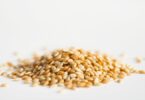Can a vibrant orange vegetable really boost your dog’s health? This question sparks curiosity among pet owners exploring natural treats. Packed with vitamins and fiber, these colorful tubers have become popular in commercial pet foods and homemade recipes. But not every human superfood suits canine diets.
Veterinarians often approve cooked, plain versions as occasional snacks. However, preparation methods and portion control matter. For example, adding butter or seasoning could harm your furry friend. Even nutritious options require moderation—experts suggest limiting them to 10% of daily calories.
Before sharing this veggie with your pup, consult a vet. Allergies or digestive sensitivities vary between animals. When introduced properly, the benefits include better gut health and immune support. Learn more about safe practices to avoid risks like choking or blood sugar spikes.
This guide explores how to balance nutritional advantages with potential pitfalls. Discover why preparation techniques and serving sizes determine whether this treat helps or harms.
Understanding Sweet Potatoes in the Canine Diet
Many commercial dog foods now feature an unlikely star ingredient. This orange root vegetable offers a powerhouse of nutrients that align with modern pet nutrition standards. Let’s break down what makes it stand out.
The Nutritional Profile of Sweet Potatoes
Rich in beta-carotene, these tubers convert to vitamin A in a dog’s body. This supports vision and immune health. They also contain vitamin C for collagen production and B vitamins for metabolism.
Dietary fiber plays a key role here. A single cup provides 4 grams, aiding digestion and blood sugar regulation. Unlike white potatoes, they release energy slowly due to their low glycemic index.
Why Pet Food Brands Embrace This Ingredient
Manufacturers prioritize sweet potatoes for their hypoallergenic properties. They’re less likely to trigger food sensitivities than grains. The soft texture also works well in kibble and wet food blends.
When crafting a balanced dog meal plan, vets suggest pairing this vegetable with quality proteins. Popular recipes mix mashed tubers with turkey or salmon for nutrient diversity.
Are Sweet Potatoes Good for Dogs: Evaluating the Pros and Cons
This vibrant root vegetable presents both opportunities and challenges in pet nutrition. Responsible pet owners must weigh its nutritional density against potential dietary pitfalls.
Powerhouse Nutrients Supporting Vital Functions
Loaded with soluble fiber, these orange tubers help regulate digestion. Their vitamin A content promotes healthy eyesight, while antioxidants combat cellular damage. The presence of potassium supports proper muscle function.
Veterinary studies show cooked varieties boost immune responses. Small portions can enhance skin health and coat shine. Always remove skins to prevent choking hazards.
Potential Pitfalls in Preparation and Portions
Raw versions contain hard-to-digest starches that may cause intestinal blockages. Overfeeding leads to rapid sugar absorption, particularly risky for diabetic pets. Experts recommend limiting treats to 1 teaspoon per 10 pounds of body weight daily.
Improperly cooked chunks might trigger stomach upsets. A 30-pound dog should receive no more than two tablespoons of mashed preparation weekly. Dr. Emily Carter, DVM, advises: “Introduce gradually and monitor stool consistency.”
Cooking and Preparation Tips for Dog-Friendly Sweet Potatoes
Proper preparation transforms this nutritious tuber into a safe canine snack. Follow these guidelines to maximize benefits while minimizing risks.
Safe Cooking Methods and Techniques
Boiling or steaming preserves nutrients best. Cut peeled tubers into bite-sized chunks before cooking. Bake at 350°F (175°C) for 30-40 minutes until fork-tender. Always cool completely before serving.
Remove skins thoroughly – they’re tough on canine digestion. Mash cooked pieces for small breeds or older pets. Freeze portions in ice cube trays for summer treats.
Ingredients to Avoid: Seasonings, Butter, and Added Sugars
Never use garlic, onions, or artificial flavorings. These trigger toxic reactions. Salt overload strains kidneys, while sugars cause weight gain. Whipped butter adds unnecessary fats.
Check commercial dog food labels for hidden additives. Pure mashed versions work best. For picky eaters, mix with plain pumpkin or unsalted bone broth.
Raw sweet potatoes pose choking hazards and digestive blockages. Always cook thoroughly to soften fibers. Start with teaspoon-sized portions for small dogs, increasing gradually if tolerated well.
Feeding Guidelines and Portion Control Tips
Portion management proves critical when adding new elements to a pet's meals. Even nutrient-rich options require careful measurement to maintain dietary balance. Follow these evidence-based strategies to ensure safe integration into your companion's routine.
Determining the Right Portion Size by Dog Weight
Veterinary nutritionists recommend tailoring servings to body weight. Small breeds under 20 pounds typically handle 1-2 teaspoons daily. Medium dogs (20-50 lbs) can manage 1-2 tablespoons, while large breeds may tolerate ¼ cup weekly.
The 10% rule applies strictly – treats shouldn’t exceed a tenth of daily calories. A 30-pound canine needs roughly 700 calories daily, making 70 calories the maximum for extras. Mashed varieties work well as food toppers or mixed into balanced dog meal plans.
Introducing Gradually to Avoid Digestive Upset
Start with pea-sized amounts for three consecutive days. Observe stool quality and energy levels before increasing portions. Diarrhea or vomiting signals intolerance, requiring immediate discontinuation.
Mix pureed versions with regular meals to ease digestion. Frozen cubes make low-calorie summer snacks. Consistent moderation preserves the benefits of dietary fiber and essential vitamins minerals without overloading systems.
Long-term adherence to these guidelines supports healthy weight management and nutrient absorption. Always consult your veterinarian to confirm appropriate amounts, especially for pets with diabetes or kidney conditions.
Exploring the Health Impact: When to Avoid Sweet Potatoes
While nutrient-rich, these orange tubers aren’t universally safe for every pet. Certain health conditions and preparation mistakes can turn a healthy snack into a hazard. Recognizing red flags early helps prevent serious complications.
Signs of Allergic Reactions and Digestive Distress
Itching, facial swelling, or hives may signal an allergy. Some pets develop rashes around the mouth after eating sweet potatoes. Persistent scratching warrants immediate veterinary attention.
Digestive issues often appear within hours. Loose stools, vomiting, or excessive gas indicate intolerance. These symptoms sometimes link to high fiber content overwhelming sensitive systems.
The natural sugars in cooked varieties pose risks for diabetic pets. Over time, excessive intake might strain insulin production. Moderation proves crucial for maintaining metabolic balance.
Raw sweet potatoes present unique dangers. Uncooked chunks can cause intestinal blockages or severe digestive upset. Always serve fully softened versions to avoid emergency vet visits.
Owners should discontinue use if adverse reactions occur. Chronic issues like yeast infections may develop with frequent overfeeding. Partner with your vet to assess individual tolerance levels and adjust the dog’s diet accordingly.
Wrapping Up: Making the Best Choice for Your Dog’s Diet
Navigating canine nutrition requires balancing proven benefits with cautious implementation. Cooked, plain versions of this vitamin-rich tuber can boost digestive health and provide essential minerals when served properly. However, improper preparation or excessive portions may lead to stomach issues or blood sugar fluctuations.
Always peel and soften these vegetables thoroughly before serving. Start with tiny amounts – a teaspoon for small breeds – and monitor reactions closely. Pair mashed varieties with protein sources for balanced meals rather than standalone treats.
Consult your veterinarian before introducing new foods, especially for pets with diabetes or allergies. While the fiber content supports gut function, overfeeding disrupts nutritional equilibrium. Prioritize complete diets tailored to your companion’s age, size, and health status.
Informed decisions stem from understanding both science and individual needs. By prioritizing moderation, proper cooking methods, and professional guidance, you can safely explore dietary enhancements. A thoughtful approach ensures every meal contributes to lifelong vitality.
FAQ
Can dogs safely consume sweet potatoes?
Yes, when prepared properly. Cooked sweet potatoes provide dietary fiber, vitamin A, and potassium, supporting digestive health and immune function. Always serve plain—no seasonings, butter, or oils—and avoid raw forms to prevent choking hazards.
What nutrients make them beneficial for canine diets?
They’re rich in beta-carotene (converted to vitamin A), vitamin C, and manganese. The high fiber content aids digestion, while antioxidants help combat inflammation. These nutrients contribute to skin health, vision, and energy metabolism in pets.
Are raw sweet potatoes dangerous for dogs?
Raw varieties pose risks like intestinal blockages or stomach upset due to their tough texture. Cooking softens the vegetable, making it easier to digest. Steaming or baking without additives is ideal for safe consumption.
How should owners prepare this vegetable for pets?
Peel, cube, and cook until soft—boiling, steaming, or baking are optimal methods. Avoid adding salt, sugar, or spices. Mashed or puréed versions can also be mixed into regular meals for picky eaters.










Leave a Comment